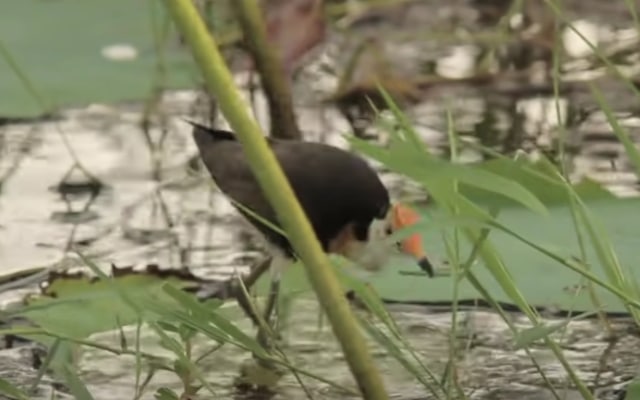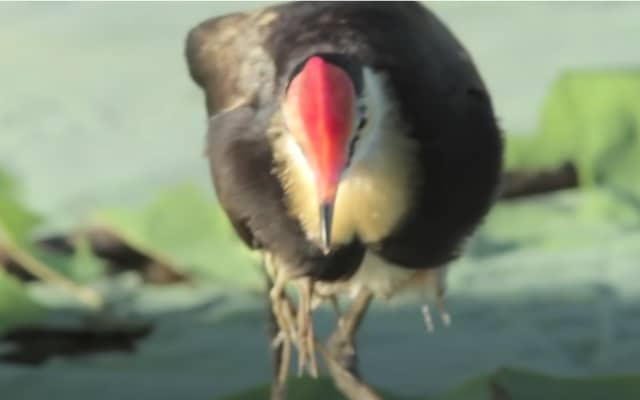Get ready to discover one of Africa’s most intriguing birds—the African Jacana. While many creatures captivate us with vibrant colors or melodic songs, this bird stands out for a different reason: its astonishing legs!
This unique creature has exceptionally long toes and claws that let it elegantly walk across floating plants in shallow lakes, which is where it loves to live. But you might be wondering, how many legs does this mysterious bird actually have? Let’s dive in and find out!

With feet that seem too big for its body, the African Jacana truly grabs attention and continues to fascinate people everywhere. Found in Africa, these big-footed birds can spread their weight so well that they can stride across lily pads while hunting for fish. Their thin legs and long toes help them move over floating plants, whether they’re guarding their home or escaping from predators. Jacanas are also called “Jesus birds” because they seem to walk on water, and they can be found not just in Africa but also in Asia, South and Central America, and Australia.
This eye-catching bird usually measures between 6 to 23 inches (15 to 58 cm) in length. In some species, their toes and claws can reach up to 4 inches (10.2 cm) long! The African Jacana lives in wetlands throughout sub-Saharan Africa and was first noted in 1789 by a German naturalist named Johann Friedrich Gmelin. Interestingly, the females are bigger than the males. They have chestnut-brown feathers with a yellowish band across the chest, a white throat, and white cheeks. They also feature a black crown, back of the neck, eye stripe, and wing tips. Their beak and the shield on their forehead are light blue, and their legs are a bluish-grey color. These birds eat small wetland creatures like insects, worms, spiders, and tiny crustaceans.

But let’s talk more about those feet. When you look at photos of these colorful water birds in their natural setting, they might seem a bit spooky at first. It can look like a small bird with way too many legs, almost like something from a ghost story.
However, there’s no need to be scared. Those extra legs are actually the legs of baby jacanas hanging beneath their mother or father. It might sound strange, but that’s exactly how nature intended it.
Male jacanas are like stay-at-home dads. After the mother lays the eggs, she leaves, and the father takes over caring for the chicks. If he senses danger, he’ll tuck the chicks under his wings to keep them safe. A reminder of the incredible wonders of our native wildlife!

As we mentioned before, jacanas break the usual bird rules—the females are larger than the males. They also have a unique family setup where one female has several male partners, and it’s up to the males to take care of the young ones. The fathers keep the eggs warm by holding them between their wings, creating a cozy and safe spot. Once the chicks hatch, they face many dangers in the African wetlands. Because they live in watery areas, many predators like crocodiles are on the lookout for an easy meal. So, the fathers stay alert and have a clever way to protect their chicks if danger is near.
They signal the chicks to hide under their wings and then quickly carry them away, with the chicks’ legs dangling in a funny way. This sometimes leads to amazing pictures where it looks like the jacana has many legs.
But really, it’s just nature and evolution at work.
Parents need to protect their young ones, no matter what, and these birds show us that wonderfully. The jacana dad looks after the chicks until they’re about 40 to 70 days old.
Another good thing about these birds is that they live in many places and have a large, stable population, so they are not at risk of extinction.
Have you ever seen a bird like this in the wild?

 Toledo, United States.
Toledo, United States.